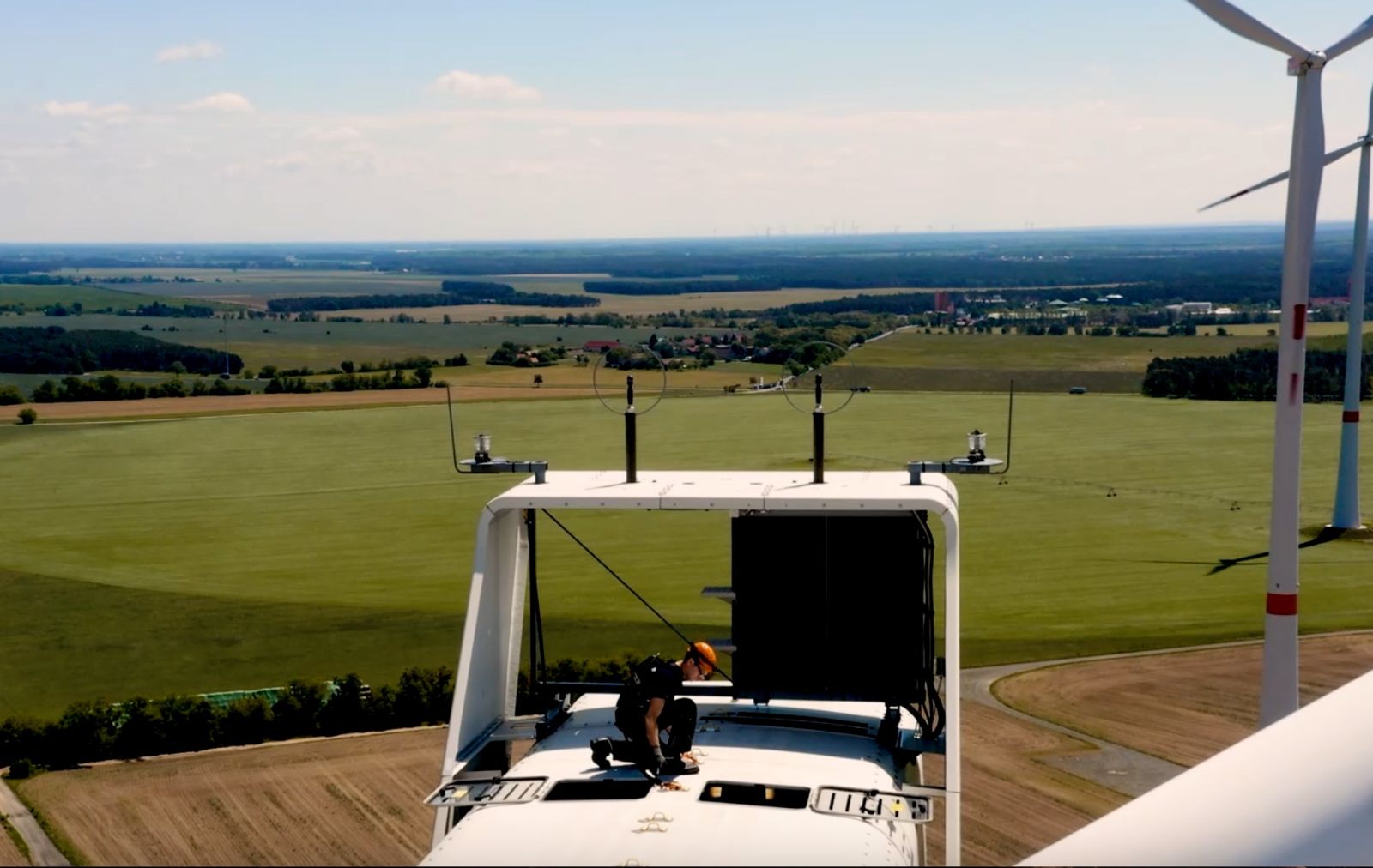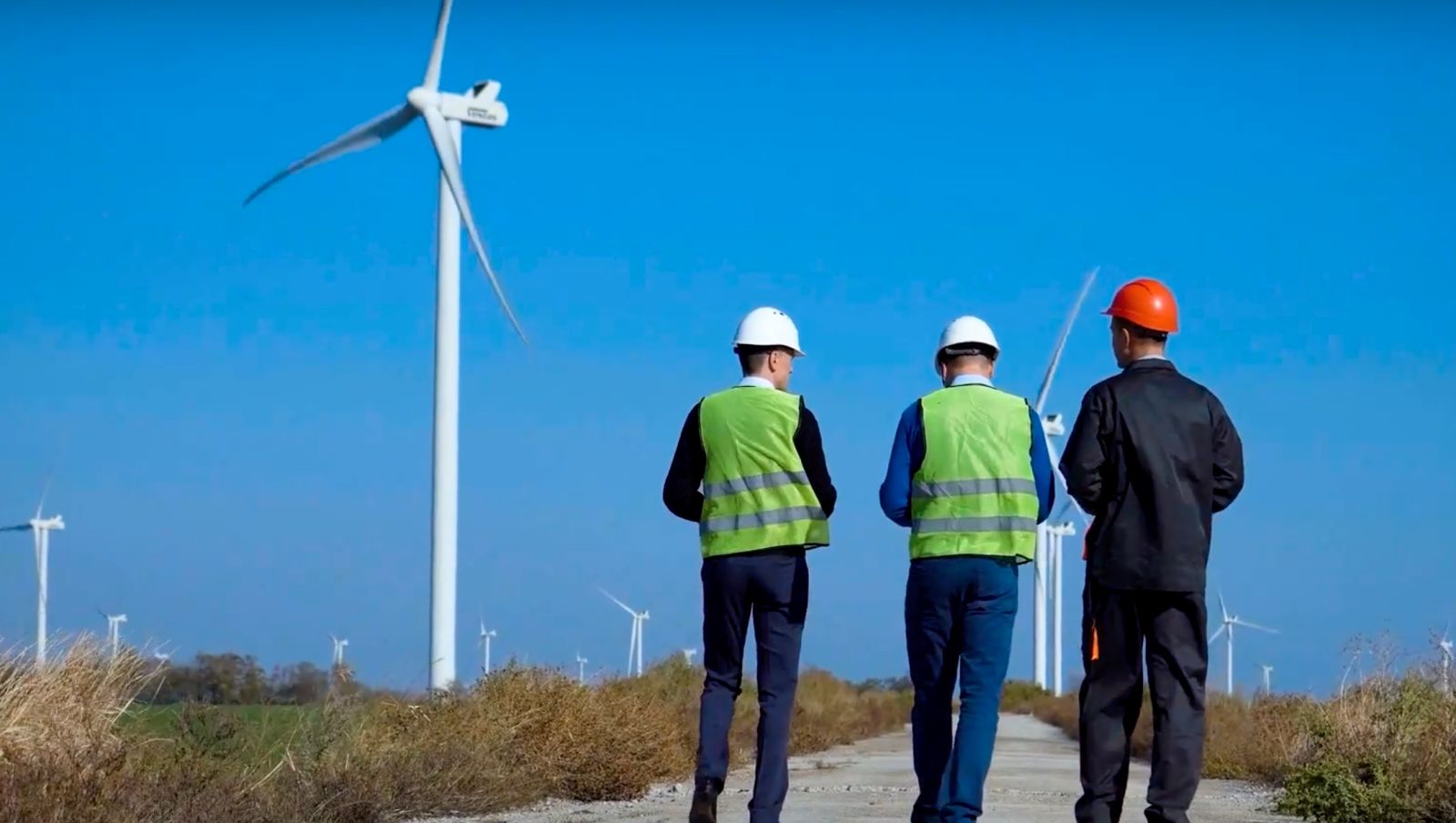Beyond the Grid: AI unlocks wind’s potential
As concerns about the impacts of climate change mount, new offshore wind projects up and down the East Coast are feeling the crunch of inflation, skyrocketing interest rates, and supply chain difficulties. It’s a perfect storm that is reducing the momentum of the wind industry from meeting its potential in the United States. Ensuring efficient, reliable renewable asset operation is a top- and bottom-line challenge, one that artificial intelligence (AI) technologies are uniquely equipped to solve.
Wind turbines churn out an immense amount of structured and unstructured data. Big data tools can ingest that data and then apply machine learning (ML) algorithms to facilitate improved reliability to benefit the industry. With remarkable precision, AI/ML can predict when systems will require maintenance or are on the verge of failing. This level of insight provides renewable asset operators and maintenance personnel with advance notice that can turn a potentially catastrophic equipment failure for workers and hardware into a routine and less expensive maintenance task. Generative AI can also be applied to automate routine tasks associated with SaaS platforms, such as data entry, report generation, and system monitoring. This increases operational efficiency and allows human resources to be redirected towards more complex and strategic aspects of renewable energy management.

Case Example: Setting yaw misalignment straight
Yaw misalignment impacts optimal turbine performance and creates an obstacle to maximizing operating margins for wind projects. Yaw misalignment occurs when the turbine's orientation deviates from the optimal position, leading to decreased energy capture and increased stress on turbine components. Traditional methods of correcting yaw misalignment involve periodic adjustments based on meteorological data or hardware solutions such as LiDAR, but these approaches often fall short in dynamically changing wind conditions. While those techniques were effective, they had noteworthy disadvantages. LiDAR measurement campaigns are expensive, and physics-based methods require data from an extended period, typically a year, which results in time spent operating with increased loads and lost production.
A far speedier and more cost-effective way to identify yaw misalignment is with machine learning-based technology. By building upon the physics-based method of using historical data to train the machine learning model to identify when yaw misalignment is present, the it can detect yaw misalignment of five degrees or more with 96 percent accuracy. This diagnosis also uses a shorter period of data compared to the year of data needed for legacy physics-based methods.
A cloud computing AI platform can run 24 hours a day, seven days a week, without the need for input from analysts. When the platform detects a turbine operating with a misalignment, it will automatically notify the analyst, providing the magnitude and direction of the misalignment, whether positive or negative, so the turbine can be returned to its optimal operating condition.
Case Example: Throwing a fastball at pitch-bearing failures
Wind farms are often located in harsh operating environments with significant wind turbulence, wind shear, and temperature changes. Pitch bearings play a crucial role in the functioning of wind turbines, allowing the blades to rotate and adjust their angle relative to the wind for optimal energy capture. However, they are susceptible to fatigue, wear, dents, and corrosion failures, especially in large megawatt wind turbines. When the integrity of the bearings is compromised, those bearings must be replaced — this is a difficult and expensive task, whether with a crane or crane-less maintenance.

The obsolete method of diagnosing pitch-bearing health involves analyzing the amount and size of the wear particles in bearing grease samples. It’s an expensive and time-consuming process because the turbine must be offline, and technicians need to enter the hub to pull samples. Even after samples are pulled and analyzed, there can be ambiguity in the interpretation of the results.
In contrast, AI technologies can detect pitch-bearing issues remotely using data that is being generated from existing analog, vibration, or acoustic sensors. It logs and events data that is continually sent to the platform, without needing to take the turbine offline or physically climb the turbine. When a faulty pitch bearing is detected, the technology automatically notifies users so the damage can be confirmed. Failures can be predicted with over 90 percent accuracy up to six months in advance. Project owners get long lead times to order replacement pitch bearings, which can save $150,000 or more each time multiple pitch bearings are simultaneously repaired.
Case Example: Generating efficiency with generative AI
The integration of AI with Software as a Service (SaaS) platforms has proven to be transformative for the renewable energy sector. Generative AI, a branch of artificial intelligence that focuses on creating new content, is being employed to streamline interactions with SaaS platforms used in renewable energy management. The ability to immediately find information that is hidden in documents, technician notes, and manuals is a game changer. The platform can understand the context and meaning behind the data, allowing it to create automated reports that provide raw information and insightful analyses. This technology is playing a key role in unlocking big data's power and reducing the energy cost from wind.
Conclusion
In a recent National Renewable Energy Laboratory (NREL) study, researchers found that technological innovations moving into commercial markets could unlock 80 percent more economically viable wind energy capacity during this decade. The various applications for AI, ML, and natural language processing technologies in wind energy can turn structured and unstructured data into valuable insights that pave the way to predictive maintenance, energy optimization, inventory and production forecasting, and data aggregation capabilities in real time with visualization and reporting. When the power of data analytics and physics-based digital twin technology are combined, wind-energy operators can take advantage of the most comprehensive models with the highest accuracy and extended prediction horizons.
Dr. Sandeep Gupta is Renewables VP at SparkCognition, with 16 years of experience in the renewable energy industry. Sandeep’s PhD research involved wind turbine aerodynamics and eight years at a wind turbine OEM, where he led the loads and controls department. Sandeep received a Ph.D. in Aerospace Engineering from the University of Maryland, an M.S. in Aerospace Engineering from Rutgers University, and a B.Tech (Hons.) in Aerospace Engineering from the Indian Institute of Technology, Kharagpur.
SparkCognition | www.sparkcognition.com
Author: Dr. Sandeep Gupta
Volume: 2024 January/February









